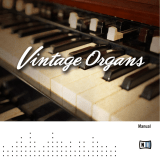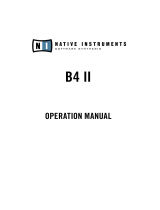
Drawbars & Percussion
9
Try Your Own Drawbar registrations
Part of the fun of playing your Hammond Sk instrument is to experiment with you r own Drawbar arrangements. It is not
essential that you use the registration set up on any music you may have or attempt to duplicate exactly the sound you may
hear on a favorite song.. These registrations merely represent the preference of t he composer, arranger or player and many
not be your choice of tonal color at all. You may find that the acoustics of the room in which you are playing may make it
desirable to vary slightly the registrations used . You may especially wish to supply a little more or a little less "brilliance"
by varying the amount of the higher-pitched Drawhars used. Do not hesitate to experiment with tonal colors on your - there
are man y thousands of beautiful tones in the instrument and part of the enjoyment of using Drawbars lies in creating new
sounds to make your music more interesting.
Changing Drawbar Registrations
Sometimes making dramatic changes of tone color in registration can be very effective in a musical presentation. However,
some selections may require changes of tone that are very "contrasty" in character and occasionally they come at a point in
the music where it will difficult to make them and continue to play without a break in your music. In this case, it is
recommended that you figure out ahead of time what Drawbar changes need to be made and save them to a Patch for later
recall. This is explained in the PATCHES & FAVORITES section.
In other cases, the registration change may need to be more subtle - for example, on a big pipe organ, a change of tone can
be affected by turning one or more stops “on” or “off” such that the change of tonal color represents an addition or
subtraction from the basic tone. This method of changing tonal colors gives you a very smooth and natural now of music. It
is therefore suggested that you practice making very simple Drawhar changes - one Drawhar, or two at most - which you
can do in a split second, and which will give you a noticeable change of tone yet one that is a natural transition from the tone
you have been using.





















